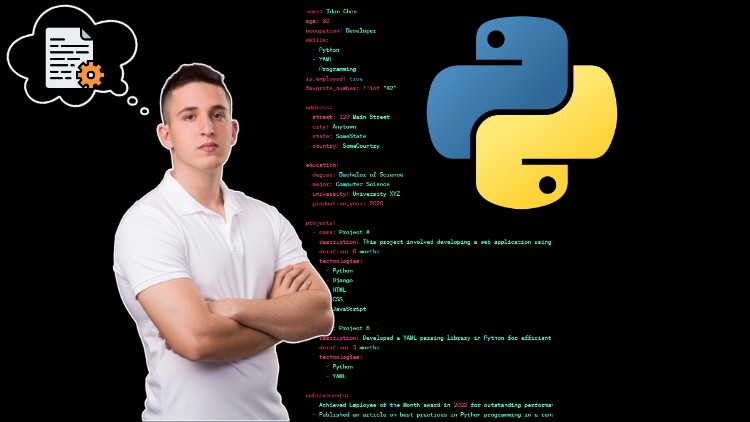
Mastering YAML Configuration with Python: Unleash Your Project’s Potential
What you will learn
Understand YAML syntax, including scalar types, sequences, mappings, and indentation rules.
Use the PyYAML library to load, parse, and manipulate YAML files in Python.
Create YAML files programmatically, representing scalar values, lists, dictionaries, and nested structures.
Organize project configurations in YAML files and handle different environments.
Explore advanced YAML concepts such as tags, custom parsing, multiline strings, and including external files.
Handle YAML parsing errors and validate data structures using schemas.
Compare and choose between popular YAML libraries in Python.
Integrate YAML with Python frameworks like Django and Flask for configuration.
Serialize Python objects to YAML and deserialize YAML into Python objects.
Study real-world projects, learn best practices for structuring YAML files, and optimize YAML usage.
Description
Welcome to “Complete Guide to yaml with python – Configure your project!” Course!
Discover the power of YAML and Python to configure, control, and streamline your projects! This course is designed to take you from beginner to expert, teaching you the skills to elevate your Python projects to the next level.
By taking this course, you’ll gain the following:
- Fundamental Knowledge: Dive deep into YAML and its critical role in Python configuration, covering basics like syntax and structure.
- Practical Skills: Learn how to read and write YAML files in Python, manage configurations, and even create your own configuration class.
- Advanced Techniques: Delve into the advanced aspects of YAML configuration, including encrypting sensitive data, validating configuration files, and managing changes and versions.
- Testing Know-How: Equip yourself with the skills to test and debug your YAML configuration, ensuring smooth and error-free project execution.
- Best Practices: Understand the best practices for using YAML in Python projects, setting you up for long-term success.
- Additional Resources: We’ll provide you with other learning resources to continue honing your YAML and Python skills after the course.
Whether you’re a seasoned developer looking to expand your skillset or a beginner hoping to master the art of Python configuration, this course offers everything you need and more. Empower yourself with valuable, in-demand skills that can help streamline your workflow, enhance project outcomes, and boost your career growth. Join us today and start your journey toward becoming a YAML configuration expert!
Content